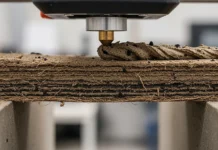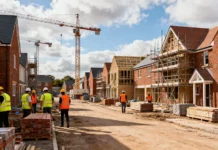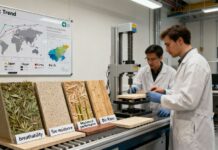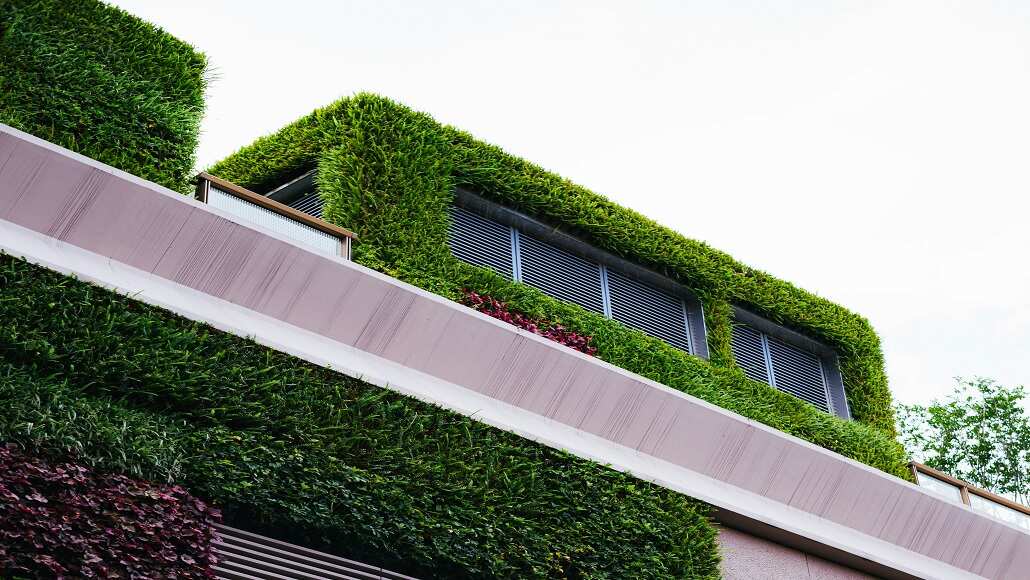When it comes to buildings, structural systems have gone on to dominate the conversations when it comes to carbon thus far, with more level of enquiry when it comes to the high embodied energy of concrete and steel.
But the facade also contributes when it comes to a building’s overall carbon footprint and is increasingly receiving attention for this particular element as far as environmental performance is concerned.
Apart from wood-based envelope components, designers, along with manufacturers, have been developing bio-based choices for the other common facade materials, especially cementitious, metal, and polymer composites.
Just as mass timber is getting increasingly adopted when it comes to structure, bio-based materials are most likely to become more common when it comes to envelope systems like carbon-conscious construction methods.
It is well to be noted that the BioBuild project, which is sponsored by the European Commission, happens to be the first self-supporting facade panel made of biocomposites in the world.
Developed in collaboration with GXN innovation, whose prototype biocomposite panel went on to first appear in its Louisiana Pavilion 2009, the BioBuild facade has in its natural fibers and resins. Within the primary system, there are two external shells that are made of flax fibers that are solidified through bio-polyester and are backed with insulation.
The 13’x7’x6’’ modules, each of which incorporates a window, make use of half the embodied energy when it comes to conventional construction materials. There happen to be three other building systems, that have in them – a rain screen system made out of jute fibers and furan, which is a sugarcane-based resin, internal partitions that consist of flax and furan, and suspended ceilings that are jute and biopolyester made. All the bio-build system components can be easily disassembled and even recycled.
Interestingly, the Osirys project, which is also funded by the European Union, went on to gather 18 organizations that include UNStudio in order to research and develop fresh biocomposite building products.
Just like BioBuild, the effort went on to result in multiple systems – a curtain wall, a multilayered facade, and also an interior partition system.
The team looked to replace the most traditional components with bio-based materials across every design.
For instance, the curtain wall system, which consists of biocomposite profiles, a bio-based surround, glass panels, and biocomposite trading panels.
Apart from reducing carbon emissions, the components within the Osirys systems emit much less volatile organic compounds (VOCs) as compared to other standard building products, hence delivering much better air quality.
Besides this, a more specialized technology happens to be bio-based facade trellis. This sort of envelope product is due to a partnership between BComp, which is a fiber producer, and Temca, which happens to be a composite manufacturer.
Installed at the new Cité Scolaire Internationale Jacques Chirac School in France. Trellis happens to provide shade and gives out a very distinctive visual pattern when it comes to the facade.
It is worth noting that every lightweight panel consists of flax fibers that are molded in one of five varied patterns and then reinforced with glass fibers as well as polyester resin. The models happen to be coated with a UV protective surface that goes beyond their longevity. Apparently, the French scientific and technical center for building has gone on to confirm the product’s technical performance when it comes to cladding application.
Biocomposite facade systems like these are still in their nascent stage of development and there is still a long way to go for commercialization phase. Although renewable fibers, such as jute or flax, are available in large quantities, the industrial processes that are necessary to transform such raw materials along with compatible resins into dependable facade components are very fresh.
Notably, bioresins are still very uncommon, and hence motivation for the manufacturers to roll out standard petroleum-based resins significantly limits the capacity for future recycling and also sort of diminishes the actual purpose of using biomaterials.
Nonetheless, the technological advances generally go on to face certain early barriers in their development and need more investments in order to overcome such barriers that are associated with strict testing and also product scaling. Embracing the future climate as well as resource targets will need development when it comes to carbon-friendly facade choices, and it is indeed unreasonable to anticipate wood to go ahead and fulfill this function and that too exclusively as a material. Therefore, biocomposite facade systems are indeed an amicable contribution that point to an exciting future when it comes to building envelope technology as well as design.































